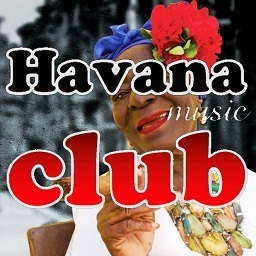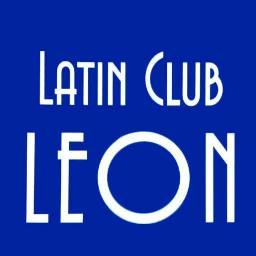Search Results for: music
Latin America / August 2025
French flamenco dancer Fanny Ara lets us know the most important details of her career
There are countless artists from all over the world who have fallen in love with Latin and Spanish-speaking rhythms due to their colors and richness, so we cannot fail to talk about cases like that of dancer, choreographer and dance teacher Fanny Ara, with whom we had the opportunity to talk for a few pleasant minutes about her beginnings in her native French Basque Country and her current career.
This talented woman, who we met through her work with Javi Jiménez and his group Barrio Manouche, has a lot of interesting things to say, so we invite our readers to enjoy this story from start to finish.

Fanny Ara’s beginnings in dance
With respect to how Fanny first became interested in dancing, Fanny explained that her aunt was a Spanish classical dancer and convinced her parents to sign her up for dance classes when she was about six or seven years old, to which they agreed and so they did. The little girl was so pleased with this discipline that she knew at once that she wanted to be devoted to this for the rest of her life.
She studied piano, although nowadays he does not play it, and obtained a degree in music at the Bayonne School of Art and, once he had finished all her studies, she wanted to try his luck in Spain. Been there, she had the opportunity to work side by side with some of the best exponents of flamenco dancing such as Isabel Quintero and Antonio Najarro, sparking her curiosity for looking further into it and specializing in it.
In the end, she stayed in Spain for a few more years and had no incentive to return to her country of origin. She had already started a new life in a completely different place and a profession that kept her there for the time being.
Moving to the United States
While still living in Spain, Fanny fell in love with an American and went to live with him in San Francisco, where her partner had always lived. She was fortunate enough to move to what was no other than the city with the largest flamenco music scene in the country, so it was not at all difficult for her to adapt to the new world that was opening up before her.
In fact, it did not take long for her to join dance companies, teach classes and perform just like she had been doing in Europe. The only difference is that San Francisco was a big city, while her hometown was very small and Seville, where she lived in Spain, was not a big village either, so this was a big change for her.
San Francisco opened her mind tremendously in many ways that she had not considered, so she decided that this would be her new home indefinitely.

Differences between the American and European market in terms of dance
Given that San Francisco had a much wider variety of cultures and music, Fanny was able to experiment with many other art forms like she had not done before, so she was able to dance different genres from flamenco such as jazz and even salsa, especially at social events.
The fact that her new home did not have the same traditional barriers the dancer encountered in Spain helped her to expand her horizons and try new genres and dances. In addition, being able to work in Canada and Latin America has also allowed her to expand her knowledge to unimaginable levels.
Awards and nominations
This entire career has also led Fanny to be recognized for her talent. The artist received six Isadora Duncan Dance Award nominations for important categories such as Most Outstanding Individual Dancer and Most Outstanding Musical Performance. In addition, she earned a recognition from New York’s Vilcek Foundation as “Creative Promise in Dance.”
She feels absolutely happy and lucky to be awarded and recognized for her achievements in several of her greatest works, including “Magia Flamenca,” “A Través de Tus Ojos,” “Tattooed,” “Lilith,” among others.
Biggest challenges of being a dancer and choreographer
According to Fanny, one of the biggest challenges facing an event producer and choreographer like her is the obtaining of economic resources needed to carry out her ideas, which makes it difficult to get financing for her projects, especially after the pandemic.
In addition, many venues and restaurants are not interested in paying what corresponds to a flamenco show, which greatly reduces the chances of making some labour agreements.
Another disadvantage encountered by the artist and her team is the refusal of some theaters to allow them to use their premises, as the flamenco tablao requires a certain footwear and tap, which can be a little damaging to the floor of these establishments.
However, these problems have not been an impediment for her to continue her work, although she has had to adapt to certain conditions.

What motivates Fanny to create her choreographies
One of the things that move Fanny to create a choreography is to give a voice to those who cannot speak. In the last two productions the choreographer has made, she has sought to address the abuse suffered by human beings, especially women. The plot of the play is about three dancers who have suffered some form of abuse throughout their lives, showing how important it was for Fanny to show what many people suffer today with no one to listen.
What the artist wanted was to bring a message of hope to her audience and give a voice to those who have remained silent in the face of any form abuse to them. Best of all, words were not required to give the message, as the dancers expressed their emotions through their movements and gestures, which was more than enough.
In the case of “Lilith,” Fanny was the lead dancer together with two other musicians who accompanied her to offer a simple but powerful performance about the hard life’s way of a woman, something the artist wanted to illustrate through her work.
Ara sought to raise awareness among the audience during the hour or two her show lasted, so that attendees would go home with a different view of what they had believed until now.
Read also: Javi Jiménez from Barrio Manouche talks about his career in Spain and then in San Francisco
Advanced Salsa Dancers With Superpower
North America / USA /
If you identify as an Advanced Salsa Dancer (ASD), remember that with great power comes great responsibility. When you become an ASD, the superpower than you gain is your awesome dance skills. You can use those skills to further your own pleasure and gain by holding them back from the newer dancers below you. Or, you also can give those skills freely to the new dancers waiting to be inspired.

“Waiting” To Be Inspired
The main reason to be inspired is than most new dancers aren’t actually “inspired” by the dance in a deep and meaningful way. They may love it on first sight the same way you like a thing in a store or a person you are attracted to.

But, just like you don’t know that person, they don’t know the dance yet. You don’t know yet if you want to put in the work to have a relationship. You don’t know if there’s enough to get in return until that attractive person shows you their personality. Yes, there are a few new dancers who ‘get the bug’ and dive deep right away.
But, most new dancers need time and inspiration to really fall in love. It can take you a year or maybe more. You can dance some Latin music before or get caught “Salsa” properly. It must be a combination of community, opportunity, and self-confidence that get you to that point. You need be inspired.

An Artist can make someone at their first congress feel amazing, or feel horrible.
The Superpower
The people who have put in the work to become great Salsa dancers are the people in the best position to inspire others. Their superpower is the ability to make people fall in love with the dance. It’s the reason that international artists can inspire so many.

They’ve put in the work that lets us see the best of the Salsa dance. We are attracted to their dancing, which is the first step, the first movement. An Artist can make someone at their first congress feel amazing, or feel horrible.
If the artist has a disengaged pity dance, their partner may not feel the desire to continue learning the dance. If the artist gives their all, their partner may find a renewed appreciation and desire for more.

ASD do the same thing, but on a local level. They’re generally more accessible than the international travelling pros that put them in a position to immediately influence their local community. An advanced salsa dancer who gives of themselves freely will often find many newcomers who are working to be better.
They inspire a growth mindset in their newcomers. There are many examples of this in their own community. One driven earlyintermediate dancer can pinpoint the exact moment that he/she decided to really give all enthusiasm to Salsa dance. It simply took one motivational sentence and dance from a local teacher.
Passion For Community And Dance

Many hardcore dancers feel passionate about the Salsa dancing style. So, many times they forget that newcomers often don’t know enough about the dance to be passionate about it. Mainly, newcomers become passionate about the community, energy, music, and vibe. They may like the dance, but they simply don’t know enough about it to be in love. ASD, remember that how you make beginners feel will determine how they feel about the Salsa dance.
It’s you who will show them the possibilities they have to grow. Use your superpower for all good; share it with those who need you to be inspired. Sure, in a few years you’ll have the benefits when those newcomers turn into your fellow Advanced Salsa Dancers Thanks to their instructor who you are, their best dancer of inspiration.

Somaly Zapata
Latin America / Puerto Rican / Puerto Rican
Somaly Zapata She Shows Us Her Musical History

Somaly Zapata Santana is a Puerto Rican who was born on July 24, 1988 in the town of Bani, Dominican Republic. From a very young age, she showed inclinations for musical art, getting to participate in different social events. Her first song was a Mother’s Day gift to her grandmother when she was 13 years old. As the years passed, its melody and lyrics developed in the genres of Salsa, Merengue, Balada, Bachata or a fusion of them, giving it a characteristic that other songs do not have.

She was influenced by great tropical artists such as Milly Quezada, Olga Tañon, Celia Cruz, La India, among others; However, he did not show his voice to the public at that time because he was a very shy person, but always with a musical spirit deep inside.
She began to perform in different activities, imitating only the movements of Milly Quezada and mimicking her great themes almost perfectly. In her adolescence she began to discover herself as an artist on a vocal level through her lyrics, taking classes on topics related to this art, writing situations with no personal experience, but which were interesting for a composer hungry to express her most intimate feelings.

In 2011 he decides to go to work in the US (Stagedoor Manor Performing Arts) as a cultural exchange, which allows him to acquire knowledge and in turn save money to be able to professionally record his first song. From that moment on, he began his artistic career at the hands of the prominent Dominican musician/arranger Juan Valdez Ybet, who fusing ideas, supported by the great career of Mr. Valdez and the magic of the singer’s lyrics, launched from gradually the different singles of the artist; Not to mention, he is a member of ASCAP (American Society of Composers, Authors and Publishers).
These are the themes and/or songs that they present to us: Author: Somaly Zapata Arrangement: Juan Valdez Ybet Regalame – (Merengue) For someone like you – (Salsa) When the sun goes out – (Salsa) Doesn’t it hurt? – (Salsa) promotional theme.

For more information:
- Email: [email protected]
- Instagram: https://www.instagram.com/somalymusic/
- Facebook: https://www.facebook.com/SomalyZapata/
- Twitter: https://twitter.com/somaly_zapata
- GooglePlus: https://plus.google.com/116832184355913365324














































